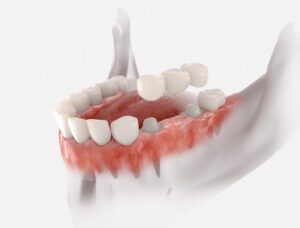5 Reasons Your Dental Bridge Might Fail
May 2, 2025

A dental bridge is a common and reliable solution for replacing missing teeth. It works by anchoring an artificial tooth (or teeth) to the natural teeth or dental implants on either side of the gap. When well-maintained, a bridge can last for many years. However, like any dental restoration, a bridge can fail over time due to several preventable and unpreventable reasons. Understanding what can cause a dental bridge to fail can help you take better care of your oral health and extend the life of your restoration.
1. Poor Oral Hygiene
One of the most common causes of dental bridge failure is inadequate oral hygiene. Even though the bridge itself is artificial and cannot decay, the supporting natural teeth (abutments) are still vulnerable to plaque, decay, and gum disease. If bacteria are allowed to build up under or around the bridge, cavities can form on the abutment teeth, weakening their structure and causing the bridge to loosen or detach.
Tip: Brush twice a day, floss around and under the bridge daily (using floss threaders or water flossers), and see your dentist regularly for cleanings and exams.
2. Gum Disease
Periodontal disease can compromise the health of your gums and the bone structure that supports your teeth. If gum disease progresses, it can lead to bone loss around the abutment teeth, causing them to loosen. When this happens, the stability of the entire bridge is at risk.
Early signs of gum disease include bleeding gums, swelling, and persistent bad breath. Addressing gum health early is key to protecting both your natural teeth and your dental restorations.
3. Bite and Alignment Issues
If your bite is uneven or misaligned, it can put excessive pressure on your bridge when you chew or grind your teeth. Over time, this stress can cause fractures in the bridge, wear down the supporting teeth, or even cause the bridge to become dislodged.
Teeth grinding (bruxism) is a common issue that contributes to this kind of damage. Dentists often recommend nightguards to protect restorations from excessive pressure during sleep.
4. Structural Damage or Wear
Though dental bridges are made from strong materials like porcelain or metal alloys, they are not indestructible. Biting down on hard foods (like ice or hard candy), using your teeth as tools, or experiencing trauma to the mouth can chip, crack, or break the bridge.
If any damage occurs, it’s important to see your dentist promptly to prevent further complications.
5. Failed Dental Cement
The cement that holds the bridge in place can weaken over time or fail due to contamination during the placement process. If the bond breaks down, the bridge may become loose or fall out. Your dentist can often re-cement the bridge if the underlying teeth are still healthy.
While dental bridges are a durable and effective tooth replacement option, they require care and attention to stay intact. Maintaining good oral hygiene, addressing gum disease early, avoiding hard foods, and keeping up with regular dental visits can significantly reduce the risk of bridge failure. If you notice any changes in how your bridge feels or functions, don’t wait – early intervention can save your smile.
About the Practice
Are you interested in getting a dental bridge to replace missing teeth? Or are you having trouble with your current restoration? No matter the issue, Stec and Stines Cosmetic and Family Dentistry is here to help you. Our custom-made restorations are designed from durable materials, and our luxury patient treatment ensures maximum comfort on your part. We can also place and restore implants under one roof – no need for referrals! To schedule your appointment, visit our website or call (308) 382-4440.
No Comments
No comments yet.
RSS feed for comments on this post.
Sorry, the comment form is closed at this time.



